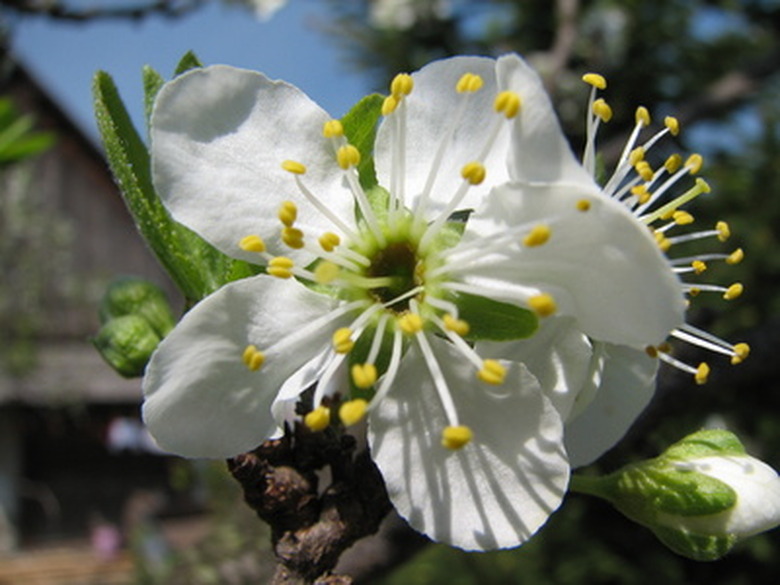Wild Plum Trees In Georgia
Wild plum trees go by a variety of names, including American wild plum, Chickasaw plums and sand cherries. No matter what you call them, eating the juicy red fruit straight off this native tree remains a joy you will never forget. Wild plums still grow in the woodlands and edges of meadows in Georgia's wilder areas. Now nurseries also offer wild plum stock so you can enjoy the tasty fruits from a tree in your own back yard.
Description
Growing to 35 feet in height, wild plum trees will grow in almost any Georgia garden. The tree features spreading, thorn-covered branches on a short, somewhat gnarly trunk. The spectacular, fragrant white blossoms appear in large clusters in early April or May before the leaves pop out. In late August or September, harvest the mature, shiny red fruits. Wild plum trees also make wonderful focal points in the fall with their bright red to yellow foliage.
- Wild plum trees go by a variety of names, including American wild plum, Chickasaw plums and sand cherries.
- Wild plum trees also make wonderful focal points in the fall with their bright red to yellow foliage.
Planting
Unlike other fruit trees, wild plums may be planted in partial to full shade, making them a great choice for the shadier areas of your garden. They also thrive in full sun as long as the soil stays moist. Plant the trees in well-drained soil–rich loams work best. Make sure to water the tree thoroughly, especially in hot summer weather, until the tree is well established.
Fruits
The skin of wild plums may taste tough and sour, but the sweet juicy flesh inside makes it worth every bite. Red on the outside with yellowish flesh, wild plums may be eaten fresh or used in pies, jams, jellies and preserves. They can also be split in half and dried like prunes or made into fruit rollups. Harvest wild plums when the fruit seems completely filled out, firm and sports a bright red color.
- Unlike other fruit trees, wild plums may be planted in partial to full shade, making them a great choice for the shadier areas of your garden.
Wildlife
A variety of birds eat the juicy plums if you don't get to them first. In some places, turkeys, black bears and foxes eat the fruit. Wild plum trees also offer important nesting habitat for a variety of birds–the shrubby tree makes a good protective shelter for birds and small wildlife. Butterflies and bees also find the tree an important food source.
Native Uses
Several Indian tribes–including the Pawnee, Comanche, Crow and Cherokee–used wild plums in sauces or eaten fresh. Some tribes dried the plums for winter use. The Omaha used the boiled bark from the roots of the wild plum as a medicine. The Cheyenne added salt to the crushed fruits to treat mouth disease.
- A variety of birds eat the juicy plums if you don't get to them first.
- Some tribes dried the plums for winter use.
